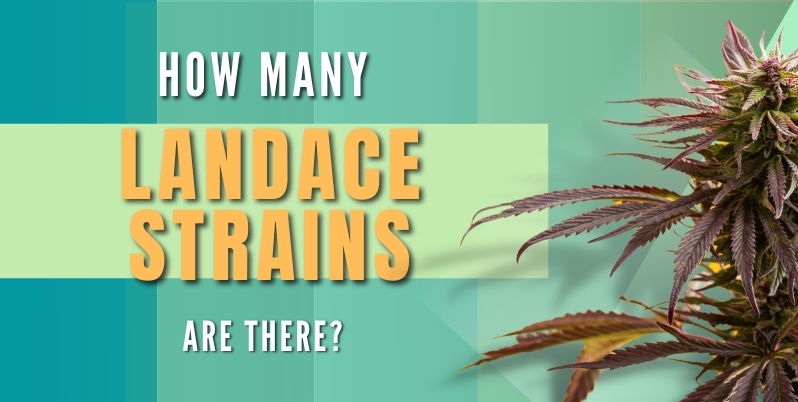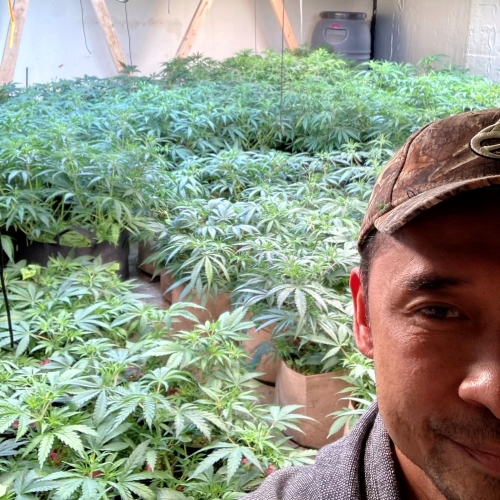How Many Landrace Strains Are There?

Landrace strains are the original cannabis genetics that grow native to specific regions of the world. They are unaltered by human intervention and have therefore adapted to the environmental conditions naturally over thousands of years.
There are currently over 30 landrace strains, from many different countries.
These strains are pure and unique, not crossbred or genetically modified, offering a distinct profile of effects, aromas, and flavors. Landrace strains provide a glimpse into the cannabis plant’s natural evolution and diversity. Let’s take a look at where in the world landrace strains come from and also dive into how many different types of Landrace Strains exist in the world.
What are Landrace Strains?
Landrace strains grow naturally in various regions of the world. Each region molds a unique strain with different characteristics that have developed to cope with that specific region. Historically, they evolved in isolation, adapting to local environments.
Notable regions include the Hindu Kush mountains of Afghanistan and Pakistan, famous for their Indica varieties. Africa, especially regions like Malawi and Ethiopia, are known for producing potent sativa dominant strains such as Durban Poison. Central Asia and the Indian subcontinent have also contributed significantly.
Each region’s climate, soil, and cultivation practices have shaped these strains, making them a reflection of their native terroir. Understanding their origins helps us appreciate the diversity and adaptability of cannabis.
Where do Landrace Strains come from?
Afghanistan: In Afghanistan, landrace cannabis strains predominantly grow in the rugged, mountainous regions, particularly in the Hindu Kush. The climate there is arid and semi-arid, with cold winters and hot summers. Well-known strains include ‘Afghani’ and ‘Mazar I Sharif’, renowned for their robustness and resinous buds due to the growing climates.
Africa: Across Africa, cannabis grows in diverse climates, from the tropical regions of the Congo to the sun-drenched plains of South Africa. Strains like ‘Durban Poison’ from South Africa and ‘Malawi Gold’ from Central East Africa are famous for their energetic and uplifting effects due to the climates Africa offers.
Brazil: In Brazil, landrace strains are found in humid and warm climates, particularly in the Amazonian regions. Strains such as ‘Manga Rosa’ and ‘Brazilian Sativa’ are known for their unique flavors and potent effects.
China: Chinese landrace strains grow primarily in the Yunnan province, known for its temperate and subtropical climates. Strains like ‘China Yunnan’ are appreciated for their unique genetic profiles and subtle effects.
Colombia: Colombian landraces, thriving in the warm, tropical climate, are found in regions like Santa Marta. Famous strains include ‘Colombian Gold’ and ‘Punto Rojo’, celebrated for their strong cerebral highs.
Hawaii: In Hawaii, the volcanic soil and tropical climate create ideal conditions for cannabis cultivation. Strains like ‘Maui Wowie’ and ‘Kauai Electric’ have emerged from these islands, known for their tropical flavors and potent effects.
India: In the regions that surround the Himalayas and the Indian subcontinent cannabis strains grow naturally in the arid mountainous climates. Often nicknames by locals as ‘mountain weed’ or ‘Himalayan’ and some of the more notable strains nowadays include ‘Malana Cream’ and ‘Kerala Gold’.
Jamaica: Jamaica’s warm, Caribbean climate is perfect for cannabis. Strains like ‘Lamb’s Bread’ and ‘King’s Bread’, originating from the island, are known for their uplifting and creative effects.
Mexico: In Mexico, landrace strains grow in both the arid northern regions and the tropical south. Strains such as ‘Acapulco Gold’ and ‘Oaxacan Highland’ come from these regions, offering unique flavors and effects.
North America: North American landrace strains are rare due to extensive hybridization, but strains like ‘Kentucky Hemp’ and ‘Virginian Gold’ hark back to the continent’s early cultivation history, adapted to the varied climates.
Thailand: Thai landrace strains grow in tropical climates, particularly in regions like the Thai Highlands. Strains such as ‘Thai Stick’ and ‘Chocolate Thai’ are famous for their intense cerebral highs and distinct flavors.
Vietnam: Vietnamese landrace strains are found in the humid, tropical climate of regions like the Mekong Delta. Strains like ‘Vietnamese Black’ and ‘Dalat’ are known for their potent effects and unique aromatic profiles.
Are Landrace cannabis strains more stable?
Growing landrace strains offer a more genetically stable plant when compared to hybrid varieties. This stability is due to their long-term adaptation to specific local environments over generations, leading to a consistent expression of traits. These strains have evolved naturally, without human interference in breeding, resulting in a robust genetic makeup that is well-suited to their native climates and conditions.
This genetic stability means that landrace strains typically show less variation in their characteristics, such as growth patterns, potency, and flavor profiles when compared to hybrids. Because landraces have grown naturally and adapted to their local climate over a long period, they have also developed a natural resistance to local pests and diseases.
However, it’s important to note that ‘stability’ in cannabis genetics can be subjective and depends on various factors, including cultivation practices and environmental conditions.
While landrace strains may be more predictable in their native environments, they might not exhibit the same stability when grown in different settings.
In the world of cannabis breeding, the stability and unique characteristics of landrace strains make them valuable for creating new hybrid strains, offering a rich genetic pool to draw from. Breeders often use landrace strains to introduce specific desirable traits, such as resilience or unique flavors, into new hybrid varieties.
Final thoughts
We’ve traveled from the Hindu Kush mountains to the tropical fields of Jamaica, uncovering the origins and unique traits of the different landrace strains. Landrace strains offer a stable plant and a much simpler growth than you might get with hybrids. Unfortunately, they don’t get the credit they deserve with many growers now just opting for the strongest weed they can get their hands on. Next time you grow cannabis, just keep in mind that whether you are growing Dosilato or RS11, it all starts with and landrace strain. Don’t forget to like and share this article!
Cannassentials reviews online head shop products with a rigorous 6 step method. We take the guesswork out of cannabis products so you can make the smartest purchase for yourself.
Get all the latest weed gadgets updates and reviews sent to your inbox for free.

